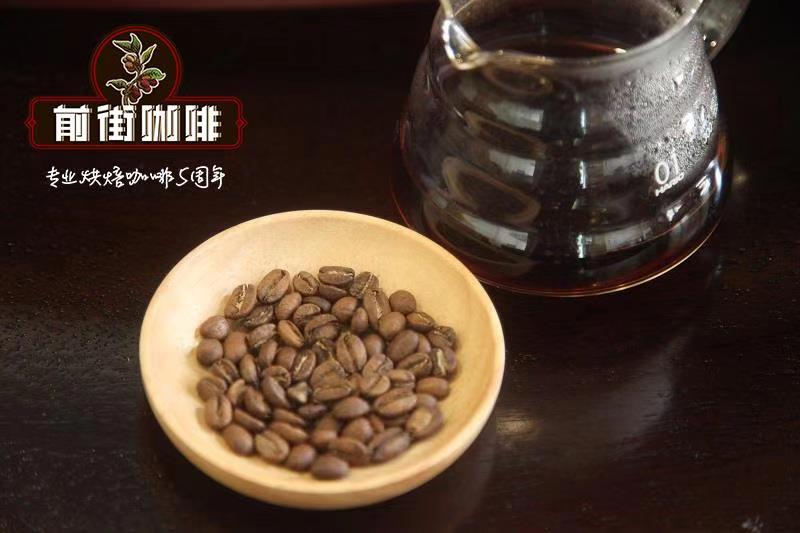What are the quality characteristics of Essel coffee beans? what is the difference in flavor between Yega Xuefei washing and sun treatment?

Professional coffee knowledge exchange More coffee bean information Please pay attention to coffee workshop (Weixin Official Accounts cafe_style)
Front Street-Ethiopian coffee ranking, washing, sun difference profile
Ethiopia, blessed with natural conditions, is suitable for growing all conceivable varieties of coffee. Ethiopia's coffee beans are mainly grown as highland crops in areas with altitudes of 1100-2300 meters above sea level, roughly distributed in southern Ethiopia. Deep, well drained soils, slightly acidic soils, lateritic soils, and soft, loamy soils are suitable for growing coffee beans because they are rich in nutrients and have an adequate supply of humus.
Rainfall is evenly distributed during the seven-month rainy season; fruit grows from flowering to fruiting and crops grow 900-2700 mm per year during the plant growth cycle, while temperatures fluctuate between 15 ° C and 24 ° C throughout the growth cycle.
The bulk of coffee production (95%) is done by small shareholders, with an average yield of 561 kg/ha. For centuries, small shareholders of Ethiopian coffee farms have been producing a variety of high-quality coffee types. The secret to producing good coffee is that coffee farmers have developed a coffee culture under suitable conditions through generations of repeated learning of the coffee growing process, which mainly consists of farming methods using natural fertilizers, picking the reddest and fully ripe fruits and processing them in clean conditions.
Ethiopian coffee varies in quality, nature, and variety due to differences in elevation, region, location, and even land type. Ethiopian coffee beans are unique due to their natural characteristics, including "size of coffee beans,""shape,""acidity,""quality,""flavor" and "aroma." These characteristics give Ethiopian coffee its unique natural qualities, and Ethiopia usually acts as a "coffee supermarket" for customers to choose from.
Ethiopia's total coffee production ranges from 200,000 to 250,000 tons per year. Today Ethiopia is one of the largest coffee producers in the world, ranking 14th in the world and 4th in Africa. Ethiopian coffee is also among the most popular in the world.
After harvesting, the coffee beans must be processed immediately, otherwise they will start to ferment and cause the coffee beans to produce odors. There are two methods of treatment,"sun method" and "washing method", which will cause different flavors. The beans of solarization method have complete natural mellow flavor, gentle aroma and more colloid; washing method has good mellow flavor, high aroma and lively acidity.
Knowledge tip: Yerga sherry is synonymous with fruity and floral coffee, clean and bright on the palate with lively acidity that is unforgettable. Yejia Shefei is an excellent place with many legends. It is also a hot coffee item in the fine coffee market in the past ten years. Almost when talking about fine coffee, it must be talked about Yejia Shefei.
END
Important Notice :
前街咖啡 FrontStreet Coffee has moved to new addredd:
FrontStreet Coffee Address: 315,Donghua East Road,GuangZhou
Tel:020 38364473
- Prev

A brief introduction to the History of Coffee in Ethiopia introduction to the flavor and taste of Sidam coffee
Professional coffee knowledge exchange more coffee bean information please follow the coffee workshop (Wechat official account cafe_style) front street-Ethiopian coffee history, Sidamo Coffee brief introduction about the origin of coffee story, quoted in the earlier article, it is the legendary Caldy, who was recorded around 850 AD. This is related to the fact that coffee cultivation began around the 9th century.
- Next

How about African Ethiopian Coffee A brief introduction to the characteristics of Coffee in Gucci Coffee producing area
Professional coffee knowledge exchange more coffee bean information please follow the coffee workshop (Wechat official account cafe_style) front street-Ethiopian coffee, Guji production area profile Ethiopia has the world's most diverse coffee ecosystem (forest coffee, semi-forest coffee, pastoral coffee and plantation coffee), which allows its rich Arabica genes to be preserved, plus sun exposure,
Related
- Beginners will see the "Coffee pull flower" guide!
- What is the difference between ice blog purified milk and ordinary milk coffee?
- Why is the Philippines the largest producer of crops in Liberia?
- For coffee extraction, should the fine powder be retained?
- How does extracted espresso fill pressed powder? How much strength does it take to press the powder?
- How to make jasmine cold extract coffee? Is the jasmine + latte good?
- Will this little toy really make the coffee taste better? How does Lily Drip affect coffee extraction?
- Will the action of slapping the filter cup also affect coffee extraction?
- What's the difference between powder-to-water ratio and powder-to-liquid ratio?
- What is the Ethiopian local species? What does it have to do with Heirloom native species?

